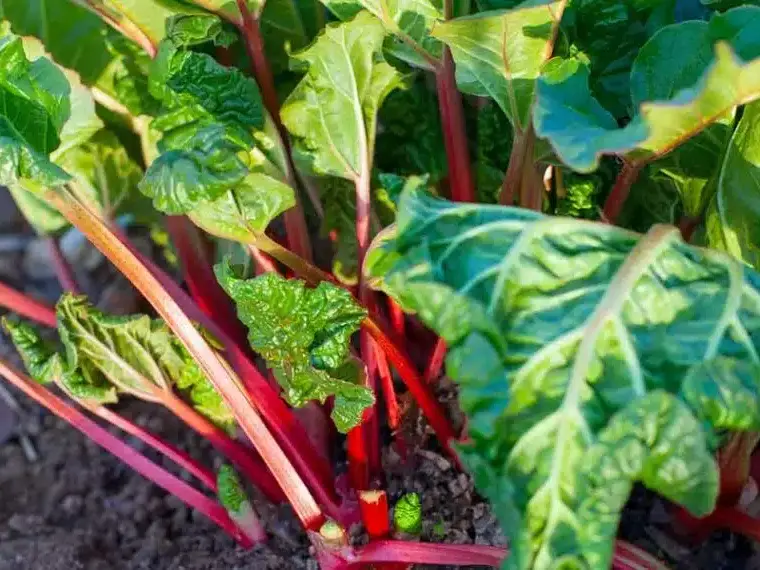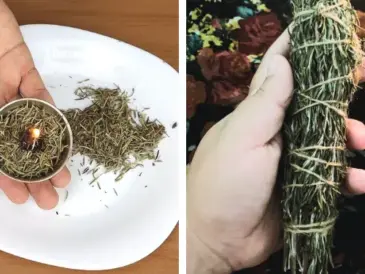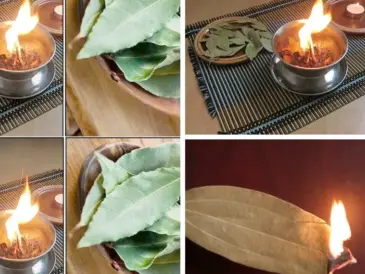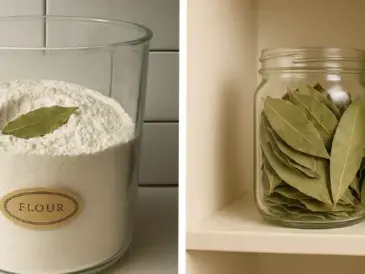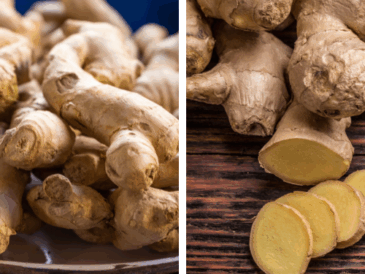When spring arrives, rhubarb bursts from the soil like a promise of fresh beginnings – those thick red stalks and giant green leaves waving proudly in the garden breeze.
Most gardeners know rhubarb for its tangy stalks used in pies, jams, and compotes, but few realize that the entire plant offers value, from stalk to leaf and even root.
Understanding the Rhubarb Plant
Rhubarb (Rheum rhabarbarum) is a perennial vegetable (often mistaken for a fruit) that thrives in cool climates.
Native to Asia and cultivated for thousands of years, rhubarb was once prized more for its medicinal root than its stalks. It’s rich in vitamins K and C, fiber, antioxidants, and natural acids that support digestion and detoxification.
The plant has three main parts:
- Stalks (petioles): Edible, tart, and full of nutrients – the culinary star of the plant.
- Leaves: Non-edible due to natural oxalic acid, but incredibly useful in the garden.
- Roots: Historically used in herbal medicine for cleansing and digestive balance.
Let’s look at how to make use of each part responsibly.
1. The Stalks – Tangy, Nutritious, and Delicious
The colorful stalks of rhubarb are where the magic begins. They bring a bright, tart flavor that pairs beautifully with both sweet and savory dishes.
Health Benefits
Rhubarb stalks are surprisingly healthy:
- High in vitamin K for bone strength.
- Rich in antioxidants such as anthocyanins and polyphenols.
- Low in calories but high in fiber – great for digestion.
- Naturally anti-inflammatory and may support healthy cholesterol levels.
10 Delicious Ways to Use Rhubarb Stalks
1. Classic Rhubarb Pie
The sweet-tart taste of rhubarb shines when baked into a buttery crust. Mix chopped stalks with sugar, cornstarch, and a hint of vanilla or ginger for the perfect filling.
2. Rhubarb Compote or Sauce
Simmer rhubarb with honey or maple syrup and lemon zest. Serve over yogurt, pancakes, or oatmeal. It’s a quick way to capture the taste of spring.
3. Homemade Rhubarb Jam
Combine rhubarb with strawberries or apples for a natural pectin boost. Store in jars to enjoy long after harvest season.
4. Rhubarb Lemonade
Boil chopped rhubarb in water, strain, and mix with lemon juice and honey. Serve chilled for a refreshing, lightly tangy drink.
5. Roasted Rhubarb
Toss pieces with a drizzle of honey and roast until tender. Add to salads, ice cream, or cheese boards for a gourmet touch.
6. Rhubarb Smoothie
Blend a few pieces of cooked rhubarb with banana, yogurt, and a dash of cinnamon for a nutrient-rich breakfast drink.
7. Rhubarb Chutney
Cook with onions, vinegar, brown sugar, and spices like mustard seed and ginger. It pairs beautifully with chicken, pork, or cheese.
8. Fermented Rhubarb Tonic
Ferment chopped stalks with sugar and water for several days to create a probiotic-rich beverage that aids digestion.
9. Rhubarb Sorbet
Blend stewed rhubarb with honey and freeze. Its natural acidity creates a bright, refreshing dessert.
10. Rhubarb Vinegar
Infuse apple cider vinegar with chopped stalks for a rosy-pink tonic full of antioxidants – perfect for salad dressings or detox shots.
Preserving Your Harvest
Rhubarb freezes exceptionally well. Chop into 1-inch pieces, spread on a tray to freeze individually, then store in bags for up to a year.
You can also dehydrate thin slices for a healthy tart snack or for adding to trail mixes and teas.
2. The Leaves – Toxic to Eat but Useful in the Garden
Rhubarb leaves contain oxalic acid and anthraquinone glycosides, which make them unsafe for eating in large quantities.
But “toxic” doesn’t mean useless – these same compounds give the leaves powerful natural properties that can be harnessed safely for household and garden use.
1. Natural Insect Repellent Spray
Rhubarb leaf tea is one of the best organic pest deterrents you can make at home.
How to make:
- Chop a few rhubarb leaves and boil in 1 liter of water for 20 minutes.
- Let cool, strain, and add a few drops of biodegradable dish soap.
- Spray on leaves of plants affected by aphids, caterpillars, or beetles.
The natural acids repel pests but break down harmlessly in the environment.
2. Natural Compost Booster
Rhubarb leaves break down quickly and are rich in nitrogen, making them excellent for compost piles. They help activate microbial activity and add moisture to dry composts.
Just avoid adding excessive quantities at once to keep acidity balanced.
3. Weed Barrier or Mulch Layer
Use large rhubarb leaves as temporary mulch to suppress weeds between garden rows.
Lay them flat around plants – they smother weeds, conserve moisture, and decompose into the soil within weeks.
4. Dyeing Natural Fabrics or Easter Eggs
The high acid content of rhubarb leaves makes them ideal for natural dyeing.
They help fix other plant-based colors (like onion skins or berries) to cotton or wool fabrics, acting as a natural mordant.
Simply simmer the leaves in water for 30 minutes and use the strained liquid in dye baths.
5. Cleaning and Polishing Metal
The oxalic acid in rhubarb leaves also works as a natural rust remover and metal cleaner.
Rub the inner side of a fresh leaf or apply leaf tea to tarnished pots or garden tools.
Rinse thoroughly afterward for a natural shine.
3. The Roots – Ancient Medicine Revived
Long before rhubarb pies became famous, it was the root that earned this plant its global reputation.
Traditional Chinese medicine has used Rheum palmatum and Rheum officinale (close relatives of garden rhubarb) for more than 2,000 years as a cleansing and purgative herb.
Medicinal Properties
Rhubarb root contains:
- Anthraquinones (rhein, emodin): Gentle natural laxatives that promote regularity.
- Tannins: Aid digestion and act as mild astringents.
- Polyphenols: Provide antioxidant protection and anti-inflammatory benefits.
It has been used to:
- Support liver function and bile flow.
- Relieve constipation and digestive stagnation.
- Purify the blood and improve skin health.
Important: The medicinal use of rhubarb root should be done under professional guidance – improper dosing can cause discomfort.
How to Prepare Rhubarb Root for Non-Medicinal Use
If you grow rhubarb and need to divide or replant it, you can still repurpose the roots:
- Root dye: Boil chopped roots to create a warm golden-yellow dye for yarn or paper.
- Natural cleaner: Combine root extract with vinegar to make a mild, biodegradable household cleaner.
- Garden tonic: A diluted root infusion poured over compost piles helps accelerate decomposition.
4. Rhubarb in the Garden – Beyond the Harvest
Rhubarb is more than a crop – it’s a hardy, ornamental, and eco-friendly plant that keeps giving back to the soil.
As a Companion Plant
Its large leaves shade the soil, suppress weeds, and help maintain moisture. The flowers attract beneficial pollinators in spring, while the scent of crushed leaves deters certain pests.
As a Soil Conditioner
Rhubarb’s deep roots pull nutrients up from lower layers, enriching topsoil when the leaves decompose. This makes it an excellent perennial soil improver for kitchen gardens.
As a Decorative Feature
Even outside vegetable beds, rhubarb’s bold texture and vibrant stalks look striking in ornamental borders or cottage-style gardens.
5. Rhubarb for Natural Home Care
Once you start experimenting, you’ll find that rhubarb offers many simple, natural solutions for everyday household needs.
1. Natural Cleaning Paste
Boil chopped stalks with a splash of vinegar. The resulting solution works surprisingly well to clean sinks, tiles, and pans, leaving a light citrus-like scent.
2. Odor Neutralizer
Simmer rhubarb stalks and peelings in a pot of water with a cinnamon stick – this neutralizes kitchen odors and leaves a subtle, fresh aroma.
3. Plant Dye and Ink
The red pigment in rhubarb stalks can be extracted and used as a natural pink dye or craft ink. Boil chopped stalks with a little alum to set the color.
6. Growing Tips for a Thriving Rhubarb Patch
Location and Soil
Rhubarb loves sun and rich, well-drained soil. Mix compost or aged manure before planting. Avoid waterlogged ground, which can cause root rot.
Planting
- Start from crowns or root divisions in early spring or autumn.
- Space plants 3 feet apart – they’ll expand generously over time.
- Do not harvest during the first year to let roots establish.
Watering and Feeding
Keep soil consistently moist but not soggy. In spring, feed with compost or an organic fertilizer rich in potassium.
Harvesting
Harvest by gently pulling (not cutting) stalks from the base once they reach at least 10–12 inches long. Stop harvesting by midsummer to allow plants to rest and store energy for the next season.
7. Safety Notes: Understanding Rhubarb’s Oxalic Acid
While the stalks are safe when cooked or eaten in moderation, the leaves and roots contain higher oxalic acid levels, which can irritate the digestive system if ingested.
To stay safe:
- Never eat the leaves raw or cooked.
- Wash your hands after handling large quantities of leaves.
- Use gloves if making insect sprays or cleaning solutions.
Remember: the natural toxicity of the leaves is exactly what makes them so effective for pest control and compost activation.
8. Zero-Waste Rhubarb – The Sustainable Perspective
Every part of the rhubarb plant serves a role – a perfect example of how nothing in nature truly goes to waste.
- The stalks feed and nourish us.
- The leaves protect our gardens naturally.
- The roots improve soil and inspire herbal remedies.
By reusing each part, you minimize waste, reduce chemical dependence, and reconnect with the cyclical wisdom of the garden.
This approach not only saves money but also honors the full life of the plant – transforming an ordinary harvest into a lesson in sustainability.
Rhubarb is so much more than a pie ingredient – it’s a living symbol of versatility, resilience, and renewal.
From its tart, ruby stalks to its broad protective leaves, this plant gives generously when treated with respect and creativity.
